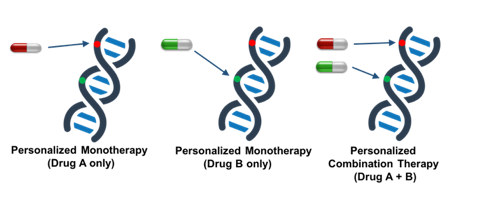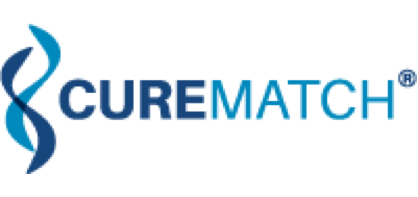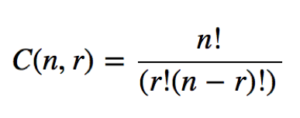By the Numbers: Combination Therapy in Oncology
There are millions of possible drug combinations to consider when using personalized cancer therapy. Finding the right one can be challenging.
Combination therapy is an approach where two or more drugs are given to treat a disease. This approach has been widely used for the treatment and/or prevention of various diseases, such HIV/AIDS, where a combination is sometimes referred to as a “drug cocktail.” Many recent studies have shown combination therapy to be effective in the treatment of cancer. However, combination therapy has not yet caught on in cancer.
Although combinations of cancer drugs are sometimes used in chemotherapy and targeted therapies, wide adoption of combination therapy can only come from personalized medicine. With personalized medicine, molecular profiling of the patient’s tumor cells is performed, revealing the cancer-coding mutations that cause cancer. This enables combinations of drugs to be selected to target specific mutations. However, selection of drug combinations is just too complicated for a human to figure out.
Let’s take a look at the numbers:
- There are 30,000 different genes in the human genome, 650 of which have been linked to cancer biology
- Within these genes, 4,476,526 cancer-coding mutations have been identified
- Many tumors can present 10 or more cancer-coding mutations (sometimes more than 10,000 variants per genome)
- There are 300 FDA-approved cancer drugs already on the market today that can be used to treat cancer
- There are more than 1,000 FDA-approved drugs on the market, many which can be used “off-label” for treatment of cancer
- There are thousands of experimental drugs in the pipeline that are waiting for FDA approvals…
Clearly, the number of cancer-coding mutations and the number of available drugs can make it very difficult for an oncologist to define the optimal regimen for one patient’s particular tumor profile. When you consider combining drugs together, this process starts to look like finding a needle in a haystack.
Let’s do the math:
If a patient has two cancer-coding mutations, then a typical approach would be to use a combination of two drugs, with each drug targeting one of the mutations.

A graphic representation, with the two cancer-coding mutations shown on the DNA strands in red and green. A cancer drug can be used to target each mutation, either individually or in combination.
The Combination Formula can be used to determine the number of ways (C) to combine groups of r drugs from a set of n distinct cancer drugs, where order does not matter and the same drugs cannot be used more than once:
So for 300 possible cancer drugs to choose from, the number of two-drug combinations is:
If this is repeated to include all 1000 FDA-approved drugs, this number increases to almost 500,000. When three-drug combinations are considered, these numbers increase to almost 4.5M and 166M, respectively!
| FDA-Approved Cancer Drugs | All FDA-Approved Drugs (considering “off-label” use) | |
| Drugs | 300 | 1000 |
| Combinations of 2 Drugs | 44,850 | 499,500 |
| Combinations of 3 Drugs | 4,455,100 | 166,167,000 |
These numbers grow even higher when considering combinations of four or more drugs, or as new experimental drugs enter the market. Clearly this is just not something that a human is capable of calculating, no matter how smart he or she is. The result is that oncologists often select the best-known treatment options, even when these options are known to have low success rates, rather than selecting, or even considering, potentially better options that are personalized for the patient.
The only way to empower oncologists to consider the full range of advanced treatment options is with a computational system that can guide their decision-making – this would allow oncologists to narrow the millions of choices down to a handful of choices, and to select the best treatment option rather than the best-known treatment option.
-Martin Culjat, Ph.D.
“A Needle in a Haystack” flickr photo by Michael Gil shared under a Creative Commons License



